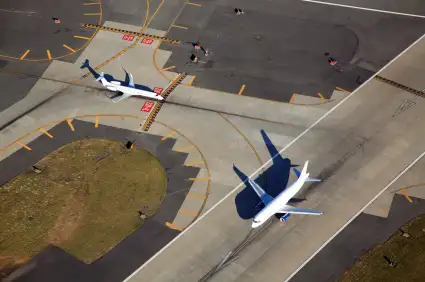
Air safety statistics are generally considered the purview of the FAA, which compiles data on air crashes, near misses, and the like.
But that data is now being challenged by a study conducted by a different government body, NASA.
According to an Associated Press story, NASA’s National Aviation Operations Monitoring System report, “the data showed events like near-collisions and runway interference occur far more frequently than previously recognized.
Unlike the FAA safety data, which relies on voluntary reporting of breaches, the NASA report is based on interviews with 25,000 pilots, who were promised anonymity in exchange for their uncensored feedback.
So—and here’s the bottom line—the NASA approach promises a more accurate reading of the current state of air safety. And if the resulting report indicates a problem, that’s something we need to recognize and address. Lives are literally at stake.
Part of the story here is the government’s resistance to making the report public, imbuing the entire situation with the stench of a cover-up.
NASA originally refused to go public with the report, citing its reluctance to scare travelers and hurt the airline industry. Congress rightly excoriated NASA for such head-in-the-sand thinking and insisted the results be released.
Just how ambivalent NASA was about making the report public can be clearly seen in the timing of the release. Adopting a tactic universally utilized to minimize media attention and coverage, NASA issued the report on New Year’s Eve, the year’s slowest news day.
Further discouraging a frank and open discussion of the findings, the data was released in raw form—”29,000 lines of raw data,” according to NPR’s coverage, entitled “NASA Releases Cryptic Airline Safety Study.”
And as if that weren’t enough to deep-six the story, NASA undermined the report’s credibility, calling its own research methodology into question.
At this point, the only conclusion that can be drawn with certainty is that NASA doesn’t want the report to see the light of day.
But the clear light of day is exactly what’s needed here. This is information paid for by the public, $11 million of your taxes and mine. Whatever picture the report paints of the country’s aviation safety policies and practices—good, bad, or too murky to discern—deserves to be considered, discussed, and acted upon. And quickly. Stonewalling could jeopardize the safety of the flying public.
We hand-pick everything we recommend and select items through testing and reviews. Some products are sent to us free of charge with no incentive to offer a favorable review. We offer our unbiased opinions and do not accept compensation to review products. All items are in stock and prices are accurate at the time of publication. If you buy something through our links, we may earn a commission.
Related
Top Fares From
Today's Top Travel Deals
Brought to you by ShermansTravel
Porto to Lisbon: 7-Nt, Small-Group Portugal...
Indus Travels
 vacation
$1899+
vacation
$1899+
Greenland: Luxe, All-Incl. 11-Nt Exploration Small-Ship...
Swan Hellenic



Ohio: Daily Car Rentals from Cincinnati
85OFF.com





